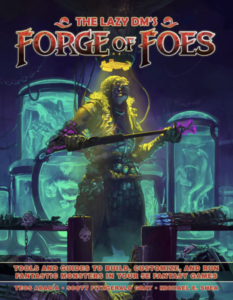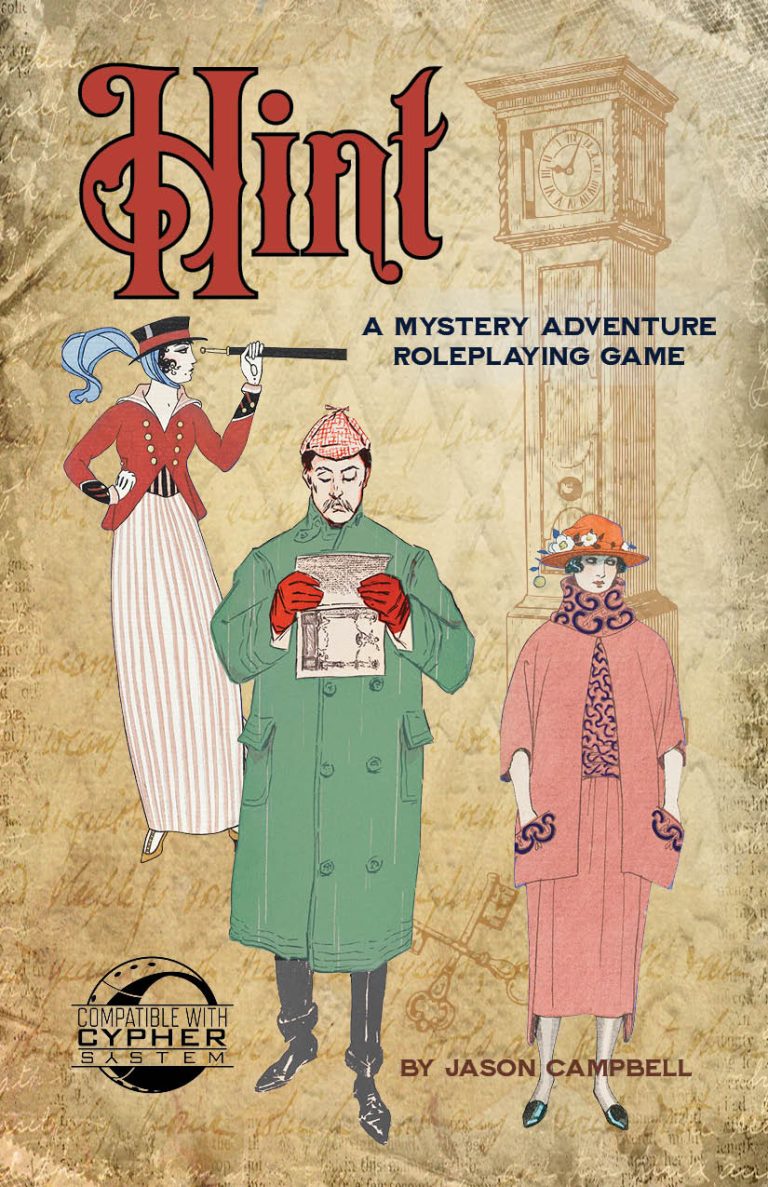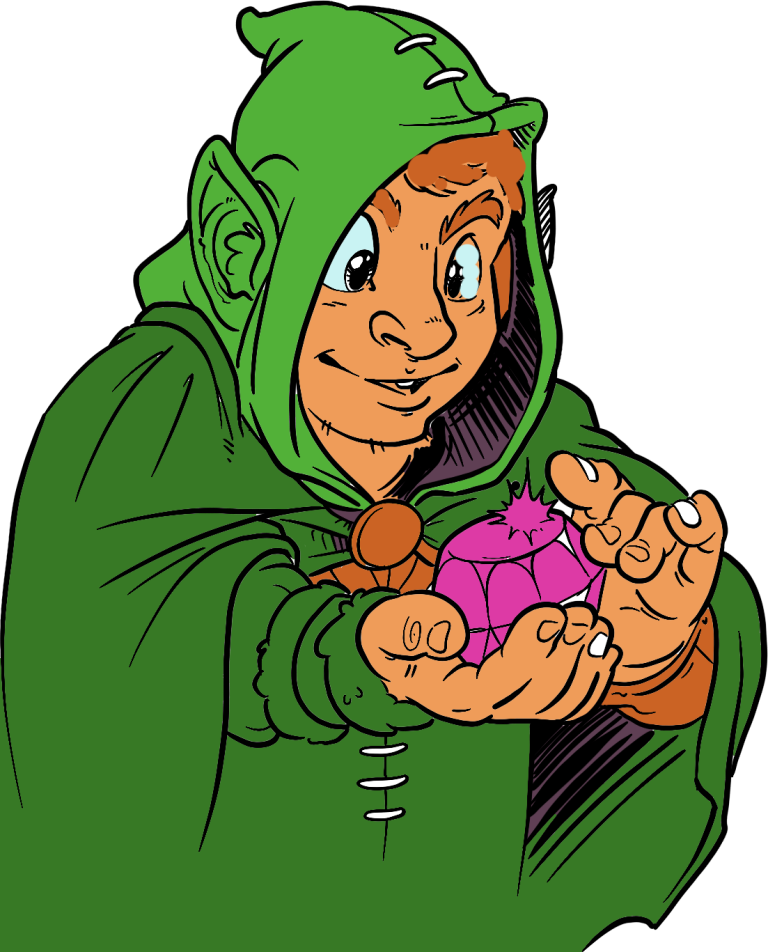By Jason Campbell
The Lazy DM’s Forge of Foes is a rpg book written by Teos Abadía, Scott Fitzgerald Gray and Michael E. Shea. It’s a tool to help GMs create, modify and run monsters and other foes in 5e based fantasy games. It’s the latest in the “Lazy Dungeon Master” series. It was recently published after a successful Kickstarter campaign and is available in PDF/ePub for $14.99 or in hardcover with the PDF/ePub version for $39.99. The book has 128 pages. The book is well constructed with a few illustrations, and the PDF is well bookmarked, though not hyper-linked between pages. Because of the content this isn’t really a problem.

Although all the books in the Lazy Dungeon Master series could be looked at as tools, this one really stands out. It’s useful while you’re preparing for a game and while you’re running a game session. The first section, Monster Toolkits, gives you tools to build your own monster. The second section, Monster Tips and Tricks, gives you advice on running monsters in games. The next section, Building Encounters, gives advice on creating encounters that are challenging for player characters of all levels. The final section, Monster Discussion Philosophy contains information on how monster and encounter building has evolved in fantasy role playing games and more ideas on how this information can inform your game.
The Monster Toolkit section begins with a table of monster statistics by challenge rating. This is the core of the system – you can build a quick monster with this table and modify it to create unique creatures. There are also templates for each monster type (elemental, fiend, ooze, etc.) This has suggestions on abilities that each type would likely have. There’s also tips for powers each type would have, and some great advice on determining the role each monster plays in the encounter, such as defender, leader, etc. The most valuable tips here are the information on how to adjust the “difficulty dials”, so your encounter serves as average, difficult or deadly, depending on what you’re looking for. The sections on running legendary monsters and boss monsters are especially useful as it has some description on the uses of legendary resistance and legendary actions, and options for alternatives to these powers.
The Monster Tips and Tricks section starts with some welcome advice for new game masters and information on action economy and how it works.
The section on building encounters has tables for “balancing” encounters for 4, 5 or 6 characters and a discussion on the “lazy encounter benchmark” – a formula to help determine whether an encounter is easy, difficult or deadly for a given group of PCs.
The final section is sort of a collection of essays about the history and development of monster challenge ratings, how to choose monsters to match the story, what makes creatures fun for GMs and players, and other topics. This is my favorite chapter for its insights. Those looking for an in game GM tool may skip this section.
All in all this book is a great value for any GM running 5e based rpgs. The three authors are well known for their writings and advice on running role playing games, having worked for many publishers. It may shock some GMs to start building monsters with a simple template but I find it valuable to understand what makes creature stat mechanics work. There’s many unique powers and effects you can use to modify these templates to create your own monsters. The book is a great resource for creating variations of common monsters, so your goblin and kobold tribes and villages contain interesting versions of these creatures.
Have you read The Lazy DM’s Forge of Foes? What did you think? Let us know in the comments!





